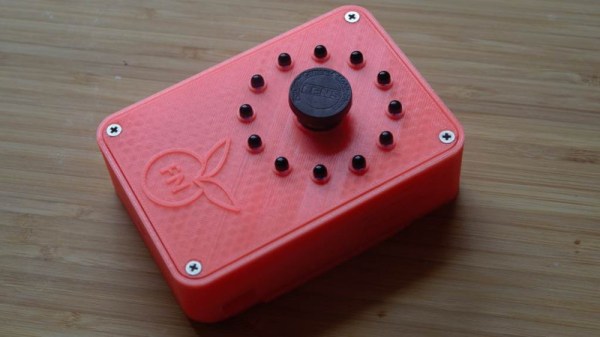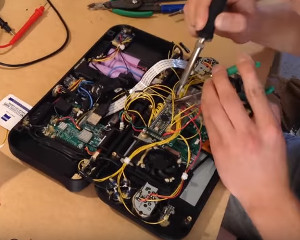[David0429] has made a very scary Raspberry Pi controlled puppet. Scary that is if you’ve seen the Saw movies where a serial killer uses one like it, called Billy, to communicate with his victims. If you haven’t, then it’s a pretty neat remote-controlled puppet-on-a-tricycle hack.
A stepper motor hidden under the front fender moves the trike by rotating the front wheel. It does this using a small 3D printed wheel that’s attached to the motor’s shaft and that presses against the trike’s wheel. Steering is done using a 3D printed gear mounted above the fender and attached to the steering column. That gear is turned by a servo motor through another gear. And another servo motor in the puppet’s head moves its mouth up and down.
All these servos and motors are wired to an Adafruit stepper motor HAT stacked on a Raspberry Pi hidden under the seat. Remote control is done from a webpage in any browser. The Flask python web framework runs on the Pi to both serve up the webpage and communicate with it in order to receive commands.
[David0429] took great care to make the puppet and tricycle look like the one in the movie. Besides cutting away excess parts of the trike and painting it, he also ran all the wires inside the tubular frame, drilling and grinding out holes where needed. The puppet’s skeleton is made of wood, zip ties and hinges but with the clothes on, it’s pretty convincing. Interestingly, the puppet in the first movie was constructed with less sophistication, having been made out of paper towel rolls and papier-mâché. The only things [david0429] would like to do for next time are to quieten the motors for maximum creepiness, and to make it drive faster. However, the need for a drive system that could be hidden under the fender resulted one that could only work going slowly. We’re thinking maybe driving it using the rear wheels may make it possible provide both speed and stealth. Ideas anyone?
In any case, as you can see in the video below, the result is suitably creepy.
Continue reading “Pi-Controlled Billy From The Saw Horror Flicks”






















